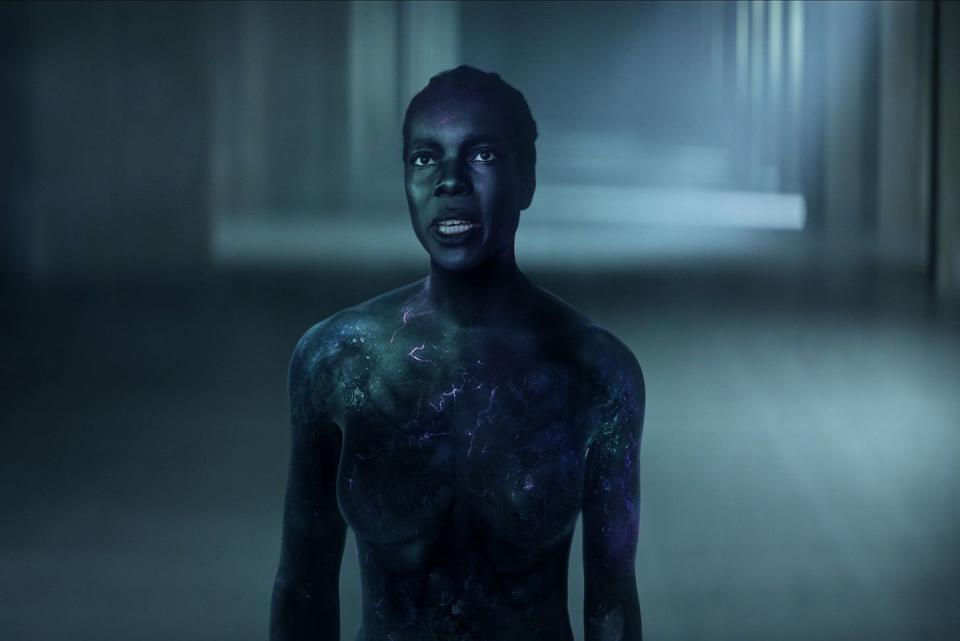Gender-Swapped, Roles Combined, and Powers-Altered: 'The Sandman' Show Vs. Comics

- Oops!Something went wrong.Please try again later.
- Oops!Something went wrong.Please try again later.
As faithful as Netflix's The Sandman is to Neil Gaiman's original graphic novels—like any story that first published in 1989 and didn't get adapted until 2022—it was due for a few changes as it came to the screen. Minor updates, such as imprisoning Dream for over a century instead of 70 years, were barely noticed by new viewers. Other changes, however, such as gender-swapping certain characters to have a more diverse cast and removing an unnecessary amount of women getting abused, were vital and obvious enhancements to the dark fantasy story.
For those wishing to be fully immersed in all things Sandman, we've broken down the biggest changes to the cast below, including Gwendoline Christie's powerful Lucifer and fan-favorite demon slayer Johanna Constantine.
Lucienne
Originally a feeble librarian named Lucien, the character's gender swap also came with an enhanced role in Netflix's Sandman series. Though she still watches over The Dreaming while Morpheus is away, she also actively helps him solve the mystery of the Dream Vortex more than her comic counterpart ever did. A touching scene in which Dream apologizes for berating Lucienne after she takes a larger role in helping him protect The Dreaming was also added to make her a more crucial role player.
Johanna Constantine
Johanna, played by Doctor Who's Jenna Coleman, was one of the largest changes from the source material. Her character is based on the DC Comics occult detective John Constantine—who has already been popularly portrayed on screen in an NBC series and a Keanu Reeves-starring film. The gamble paid off, however, with fans clamoring for Johanna to receive her own spin-off series that would see her hunting down and exorcizing demons back to Hell.

Lyta and Hector Hall
Requiring near genius-level knowledge of DC Comics lore, the original Lyta and Hector Hall from The Sandman comics made for one of the strangest crossovers of the entire series. In the comics, Hector Hall is the son of Hawkman and Hawkgirl from an alternate multiverse called Earth-Two. Similarly, Lyta (a.k.a. Hippolyta) is the daughter of Earth-Two's Wonder Woman. The two eventually fall in love as members of the Justice Society of America, but Hector is later killed by a villain known as The Silver Scarab.
Hector's soul resists death and he remains trapped in a pocket of The Dreaming, much like in Netflix's Sandman, where Lyta chooses to live with him. It is here, however, that he becomes the original Sandman from the 70s created by Joe Simon and Jack Kirby, which the Netflix series adapted into Jed Walker's storyline instead. If your head hurts, it's okay. Mine does too. Thankfully, Lyta and Hector Hall were stripped of all connection to their DC counterparts so that you wouldn't need a Ph. D in bronze age comics to enjoy watching The Sandman.

Gault
Replacing two nightmares known as Brute and Glob, Gault is an entirely new character in Netflix's Sandman. The shapeshifter helps Jed Walker in his dreams by sending him on adventures that distract him from foster care abuse. Later, after returning to The Dreaming, Morpheus transforms her into a beautiful dream that is meant to inspire those she visits.
Lucifer
Gender-swapping the ruler of Hell seems like a crazy decision for any show that isn't The Sandman. Sure, having Gwendoline Christie nail the role certainly helps. And yet, making the biblical character female—from Lucifer to Lucy, if we're being cute—seemingly didn't faze viewers at all. There's enough wacky lore to sink your teeth into in the world of The Sandman that something as simple as the ability to have Gwendoline Christie play Lucifer may be one of the show's greatest strengths.
You Might Also Like

